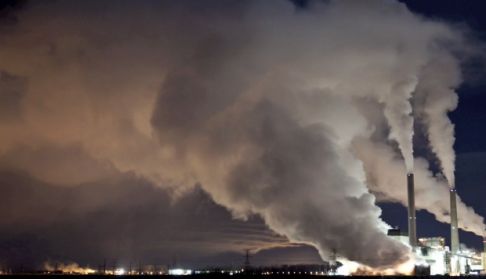A couple weeks ago, Michael Levi at the Council for Foreign Relations (one of the best energy analysts out there; bookmark his blog) wrote a post called “In Defense of CCS.” (For non-nerds: CCS is carbon capture and sequestration.) I’ve done plenty of bashing of CCS, so I read it with interest. It is structured as a fisking of a recent anti-CCS op-ed in the NYT. One of the arguments he debunks, however, deserves a closer look:
“Carbon dioxide is a worthless waste product, so taxpayers would likely end up shouldering most of the cost. …”
If you have no interest in dealing with greenhouse gas emissions, then this argument kills CCS. If greenhouse gas emissions are an issue — and that’s the only reason anyone is talking about CCS — then this completely misses the point. It will cost money to reduce emissions. CCS may be too expensive, in which case people will need to focus on other options. It may be relatively cheap, in which case it will be the way to go. The fact that it costs more than zero tells you almost nothing.
In one sense Levi is obviously right: We’ll have to spend money to reduce emissions, and we’ll probably want to choose the least expensive options, whatever they turn out to be. But I also think he dismisses the argument too quickly. There’s something there, an attempt to capture an important difference between investing in CCS and investing in renewable energy.
Here’s one way of putting it: Every dollar spent on CCS makes coal power more expensive, while every dollar spent on renewables makes clean power cheaper. A CCS facility is attached to a coal plant as a “parasitic load.” Its net effect is to siphon power away from the plant, reducing its fuel efficiency by about a third. And for what? To comply with environmental regulations, by capturing and disposing of a worthless waste product. That’s deadweight cost.
That’s been the history of coal in the U.S. since the 1970s (a process the industry has fought tooth and nail): Environmental standards rise and a larger proportion of investment dollars are redirected from generating power to cleaning up mess. Mandates for CCS will accelerate that trend with a vengeance, as will higher upcoming standards for mercury, NOX, and coal ash. As coal reserves become deeper, dirtier, and harder to get to (like we’re seeing with oil), demand rises (particularly in emerging economies), and capital costs like concrete and steel rise, inputs will grow dirtier and more expensive while the outputs get cleaner … and more expensive. Particularly as the old plants of the ’70s are phased out, coal power is on an inexorable march upward in price.
Renewable energy faces roughly a mirror-image situation. Right now it’s just beginning to scale up, while dozens of old, dirty, fully amortized coal plants have been cranking harder and harder for decades. But every dollar invested in renewables not only generates power but makes the next dollar go farther through innovation and economies of scale. It puts in place energy infrastructure that will some day be producing free American power. Fuel costs will be zero, forever, and per-mwh costs are marching downward. These are benefits private actors will be eager to claim instead of costs they are eager to externalize.
So Levi is right: We’re going to have to spend a ton of money to reduce emissions over the next few decades. But all investments in emission reduction are not equal. Some dollars build new industries and jobs — a new future — while some just clean up the messes of the past. It’s not crazy to prefer the former.


